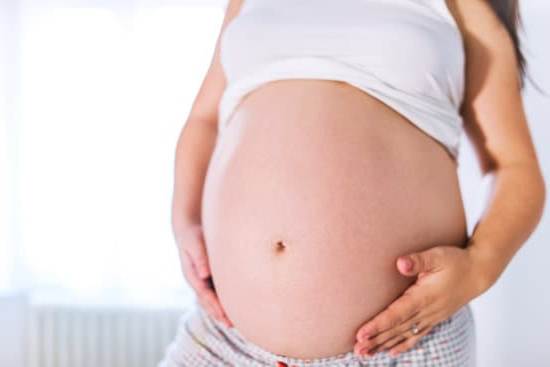Are you experiencing cramping in early pregnancy and wondering if it’s normal? Many women may experience cramping during the early stages of pregnancy, and it’s important to understand what is considered typical and when to seek medical attention.
In the first few weeks of pregnancy, a woman’s body goes through numerous changes as it prepares for the growth and development of a baby. Understanding these early stages of pregnancy can help expectant mothers recognize what is normal and what may require further attention.
Types of cramping in early pregnancy can vary, from mild twinges to more severe discomfort. It’s essential for pregnant women to distinguish between harmless cramps caused by the uterus stretching and growing, and potentially concerning cramps that may indicate a more serious issue.
Recognizing signs and symptoms associated with cramping in early pregnancy is crucial for expectant mothers. Being aware of what is typical during this stage can help differentiate between normal discomfort and symptoms that may warrant seeking medical advice. Learning how to manage cramping discomfort can also be beneficial for pregnant women.
Types of Cramping in Early Pregnancy
During the early stages of pregnancy, it is common for women to experience cramping. This can be a cause for concern and anxiety, especially for first-time mothers. Understanding the different types of cramping that can occur during early pregnancy can help alleviate some of these concerns.
Here are the types of cramping that women may experience in early pregnancy:
- Implantation Cramping: This type of cramping occurs when the fertilized egg attaches itself to the lining of the uterus, usually around 6-12 days after conception. It is often accompanied by light spotting and can feel similar to menstrual cramps.
- Round Ligament Pain: As the uterus grows and stretches, the ligaments that support it also stretch and thicken, leading to sharp or aching pains on one or both sides of the lower abdomen.
- Gas and Bloating: Hormonal changes in early pregnancy can lead to increased gas and bloating, which can cause discomfort similar to abdominal cramping.
It’s important to note that while these types of cramping are generally considered normal in early pregnancy, persistent or severe pain should always be evaluated by a healthcare provider. This includes cramping accompanied by heavy bleeding, fever, chills, dizziness, or vomiting.
Overall, understanding the different types of cramping in early pregnancy can help expectant mothers differentiate between what is considered normal discomfort and potential signs of complications. It is always best to consult with a healthcare provider if there are any concerns about cramping during pregnancy.
Signs and Symptoms to Look Out For
When experiencing cramping in early pregnancy, it is important to be aware of the signs and symptoms that may accompany this discomfort. While some cramping can be normal in pregnancy, there are certain warning signs that should not be ignored. Here are some signs and symptoms to look out for when experiencing cramping in early pregnancy:
1. Vaginal bleeding: Any amount of vaginal bleeding during pregnancy should be reported to your healthcare provider immediately.
2. Severe abdominal or pelvic pain: If the cramping is accompanied by severe pain in the abdomen or pelvis, it could indicate a more serious issue such as an ectopic pregnancy or miscarriage.
3. Fever and chills: These symptoms along with cramping could be a sign of infection, which can be dangerous during pregnancy.
4. Painful urination or blood in the urine: These symptoms could indicate a urinary tract infection, which can also pose risks during pregnancy.
It is important to keep track of any additional symptoms that may arise alongside cramping in early pregnancy. Any concerns should be discussed with a healthcare provider as soon as possible to ensure the health and safety of both mother and baby.
Seek medical attention if any of these warning signs occur while experiencing cramping in early pregnancy. It is always better to err on the side of caution and seek guidance from a healthcare professional when in doubt about any symptoms experienced during pregnancy.
When to Seek Medical Attention for Cramping
Signs That May Require Medical Attention
While cramping is common in early pregnancy, there are certain signs and symptoms that may indicate a more serious issue. If the cramping is accompanied by heavy bleeding, fever, chills, dizziness, or severe abdominal pain, it’s important to seek medical attention immediately. These symptoms could be indicative of an ectopic pregnancy, miscarriage, or other complications that require prompt medical intervention.
Consulting With a Healthcare Provider
If you are experiencing cramping in early pregnancy and are unsure whether it warrants medical attention, it’s best to consult with your healthcare provider. They can provide personalized advice based on your specific symptoms and medical history. Your healthcare provider may recommend coming in for an evaluation or provide guidance on managing the discomfort at home.
The Importance of Early Intervention
In some cases, addressing cramping in early pregnancy early on can help prevent more serious complications. If you have any concerns about the cramping you are experiencing, it is always better to err on the side of caution and seek medical advice promptly. Remember that your healthcare provider is there to support you throughout your pregnancy journey and ensure the health and safety of both you and your baby.
Tips for Managing Cramping Discomfort
During the early stages of pregnancy, it is common for women to experience cramping as the body undergoes significant changes to accommodate the growing fetus. While cramping can be uncomfortable and concerning, there are several tips for managing this discomfort and ensuring a healthy and comfortable pregnancy.
Stay Hydrated
One of the most important things you can do to manage cramping in early pregnancy is to stay hydrated. Dehydration can exacerbate cramping, so it’s essential to drink plenty of water throughout the day. Aim for at least eight 8-ounce glasses of water each day, and consider adding electrolyte-rich beverages to your routine if you’re experiencing excessive cramping.
Rest and Relaxation
Pregnancy can be physically taxing on the body, so it’s crucial to prioritize rest and relaxation. Make sure to get plenty of sleep each night, and take breaks throughout the day to rest and recharge. Engaging in gentle exercises like prenatal yoga or swimming can also help alleviate cramping while promoting relaxation.
Healthy Diet
Eating a well-balanced diet during pregnancy not only supports the growing baby but also helps manage cramping discomfort. Incorporate plenty of fruits, vegetables, whole grains, lean proteins, and healthy fats into your meals. Avoiding processed foods and excessive sugar can also help reduce inflammation that may contribute to cramping.
By following these simple tips for managing cramping discomfort during early pregnancy, you can ensure a more comfortable experience as your body adjusts to the changes of carrying a baby. However, if you find that your cramping symptoms are severe or are accompanied by other concerning symptoms, it is important to seek medical attention promptly.
Common Misconceptions About Cramping in Early Pregnancy
It is common for women to experience cramping in the early stages of pregnancy, and it can often be a cause for concern. However, there are several misconceptions surrounding cramping in early pregnancy that can lead to unnecessary worry. One common misconception is that any type of cramping in early pregnancy is a sign of miscarriage. In reality, mild cramping can be a normal part of the body adjusting to the changes taking place during pregnancy.
Another misconception is that all types of cramping are the same. In fact, there are different types of cramping that a woman may experience during early pregnancy. These can include implantation cramps, which occur when the embryo attaches to the uterine wall; and round ligament pain, which is caused by the stretching and growing of the uterus.
One of the most harmful misconceptions about cramping in early pregnancy is that it should always be ignored. While mild cramping may not always be cause for concern, severe or persistent cramping should not be overlooked. This is especially true if the cramping is accompanied by heavy bleeding or other concerning symptoms.
| Types of Cramping | Description |
|---|---|
| Implantation Cramps | Occurs when embryo attaches to uterine wall |
| Round Ligament Pain | Caused by stretching and growing uterus |
Real-Life Experiences
Many women experience cramping in early pregnancy and it can be a source of worry and uncertainty. Some women report feeling mild cramping similar to menstrual cramps, while others describe more intense sensations. It is important to understand that not all cramping in early pregnancy is a cause for concern. To gain a better understanding, let’s hear from some real-life experiences of women who have gone through this.
One woman, Sarah, recounts feeling mild cramping in the first few weeks of her pregnancy. She describes it as similar to the discomfort she experiences during her period. However, she also noted that the cramping was accompanied by some spotting, which prompted her to consult her healthcare provider. Another woman, Emily, shares a different experience of more intense cramping accompanied by lower back pain. She found relief by resting and applying a warm compress to the affected area.
In both these anecdotes, it is clear that each woman’s experience with cramping in early pregnancy is unique. While some may find their symptoms manageable, others may feel more distressed and unsure about what is normal or not. These real-life experiences shed light on the fact that there is a wide range of normal when it comes to cramping in early pregnancy.
| Woman | Experience |
|---|---|
| Sarah | Mild cramping similar to menstrual cramps accompanied by spotting |
| Emily | Intense cramping with lower back pain, found relief through rest and warm compress |
Expert Advice
In conclusion, cramping in early pregnancy is a common and normal occurrence for many women. Understanding the early stages of pregnancy is key to distinguishing between different types of cramping and knowing when to seek medical attention. It’s important for expectant mothers to be aware of the signs and symptoms that could indicate a potential problem, such as severe or persistent cramping, vaginal bleeding, or dizziness.
Healthcare providers emphasize the need for pregnant women to communicate any concerns or unusual symptoms with their healthcare team promptly. Seeking medical attention for cramping in early pregnancy is crucial if it is accompanied by other worrisome symptoms, as it could signal a possible complication that needs to be addressed promptly. It’s always better to err on the side of caution and have any unexplained cramping evaluated by a healthcare professional.
In addition, managing cramping discomfort through tips such as staying well-hydrated, getting adequate rest, and engaging in gentle exercise can help alleviate some of the discomfort associated with cramping in early pregnancy. Despite common misconceptions about cramping during this stage, it’s important for women to educate themselves about what is considered normal and seek guidance from reputable sources such as healthcare providers.
By staying informed and seeking appropriate medical care when necessary, expectant mothers can navigate the early stages of pregnancy with confidence and peace of mind.
Frequently Asked Questions
How Long Should Early Pregnancy Cramps Last?
Early pregnancy cramps can last for a few days to a week as the uterus expands and the ligaments stretch. Mild cramping is normal, but severe or persistent cramps should be evaluated by a doctor.
Where Are Pregnancy Cramps Located?
Pregnancy cramps are typically located in the lower abdomen and may feel similar to menstrual cramps. As the uterus grows, the cramping may also be felt in the back and pelvis.
What Do Very Early Pregnancy Cramps Feel Like?
Very early pregnancy cramps can feel like mild pressure or twinges in the lower abdomen. Some women describe it as a dull ache or pulling sensation. These cramps are usually not severe and shouldn’t be accompanied by heavy bleeding or intense pain.

Welcome to my fertility blog. This is a space where I will be sharing my experiences as I navigate through the world of fertility treatments, as well as provide information and resources about fertility and pregnancy.





